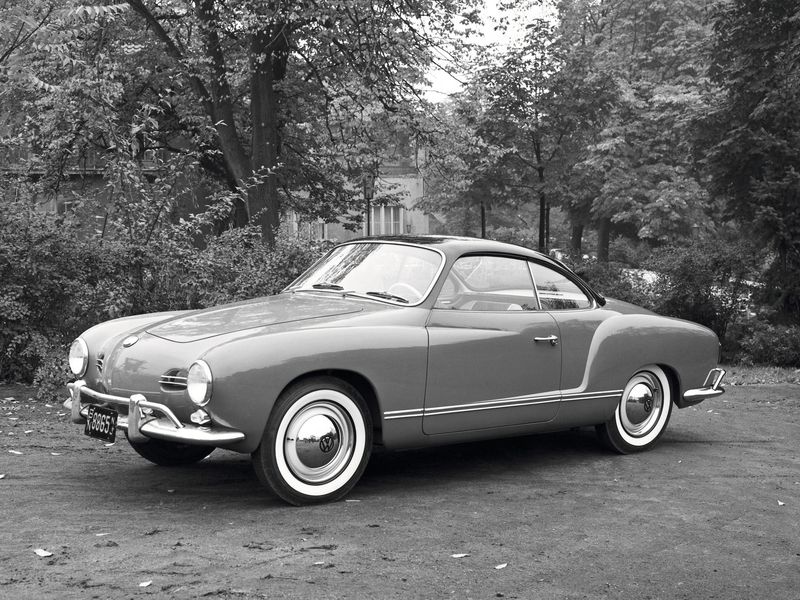
Volkswagen ends production of the Karmann Ghia on July 21,1974, at a plant in Osnabruck, West Germany.
First sold as a 2+2 coupe, built from 1955–74, and later a convertible, 1957–74, the Karmann Ghia combined the chassis and mechanicals of the Beetle. It was styled by Luigi Segre of the Italian design house Ghia and hand built by German coach builder Karmann.
Noted American industrial designer Walter Dorwin Teague called the Karmann Ghia one of the world’s most beautifully designed products.
More recently, Hagerty, in a 2019 assessment of the car, was more succinct: “While most classic VWs are charming in their ugliness, the Karmann Ghia is straight-up gorgeous. Never mind that it’s essentially just a Beetle in an expensive suit.”
The Karmann Ghia, known internally as the Type 14, was introduced at the Kasino Hotel in Westfalia, Germany, on July 14, 1955.
The car, positioned above the Beetle, was created to help VW move beyond its plain “bugs and buses” and draw a broader customer base as the European car market recovered.
The Karmann Ghia went into production in 1955 and hit U.S. showrooms in 1956, priced from $2,395. It was the brainchild of Wilhelm Karmann, who hired Segre to transform his bold idea into rolling metal in early 1953 — at first without even consulting VW. Karmann had been producing the VW Beetle Cabriolet since 1949.
VW was not the only company seeking a sexy, sporty coupe at the time. Chevrolet had launched the Corvette, and Ford had a hit with the Thunderbird. Chrysler had even tapped Ghia to create a dream car, but none of the designs materialized.
Ghia eventually supplied Karmann with a version that reprised some of the styling themes for its Chrysler design but was modified for the Beetle.
The car’s sleek lines and hand craftsmanship drew praise from VW executives and consumers. While the car lacked sufficient power from its 36 hp flat-four engine, sales totaled 10,000 in the first year.
With the release of a convertible in 1958, output rose to 18,000 vehicles a year. Sales climbed steadily through the 1960s, peaking at 33,000 a year.
The Beetle’s running gear underpinned all 450,000 Karmann Ghias built.
Over time, as the Beetle increased in popularity, especially in the U.S., VW executives decided to focus the company’s marketing resources on the Bug, and the Karmann Ghia was dropped.